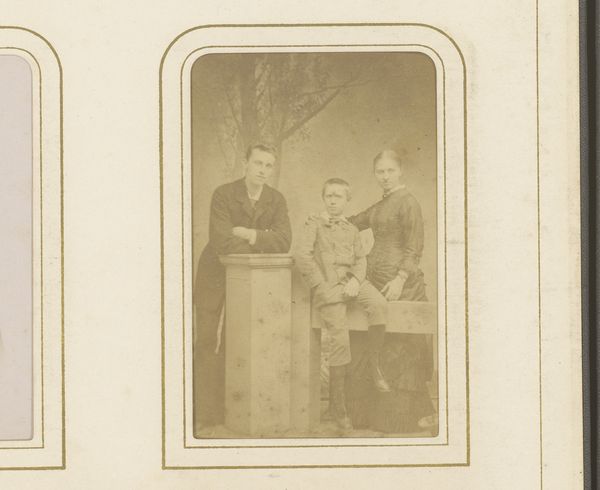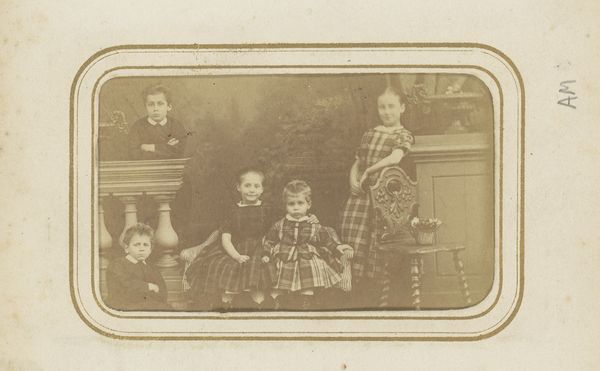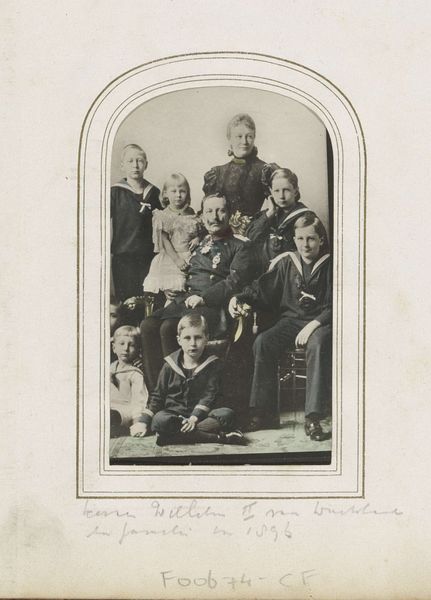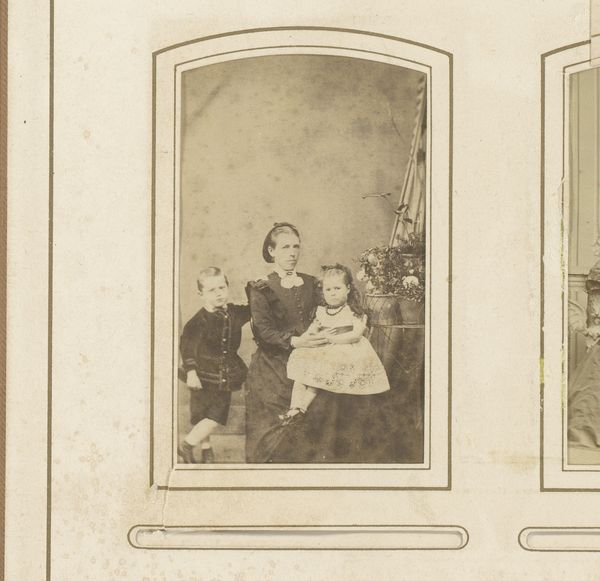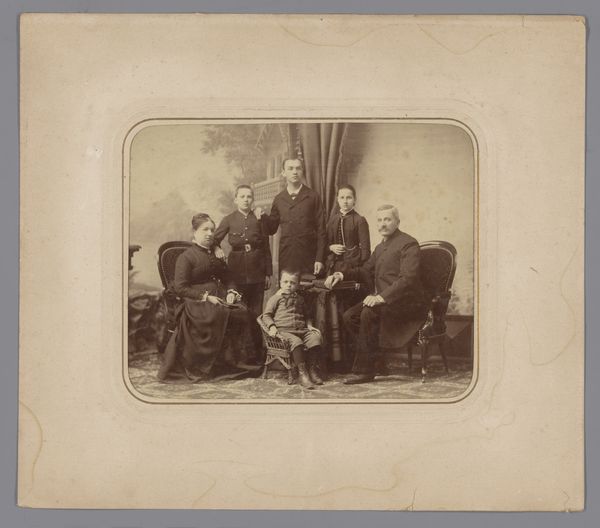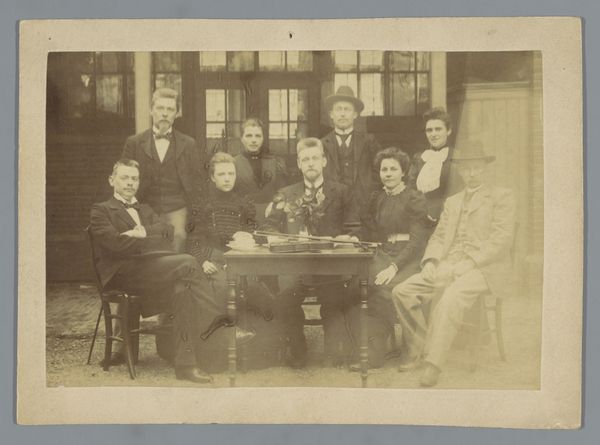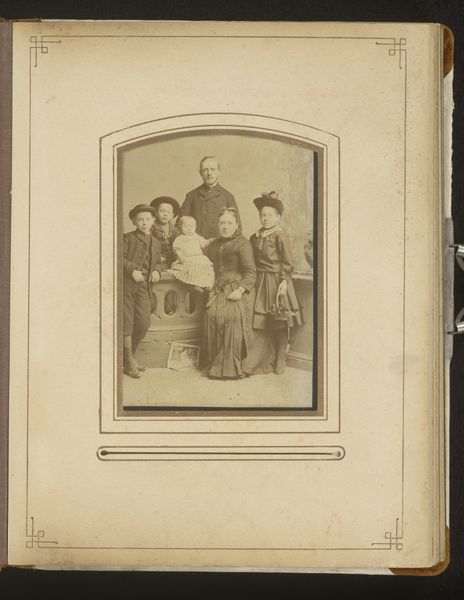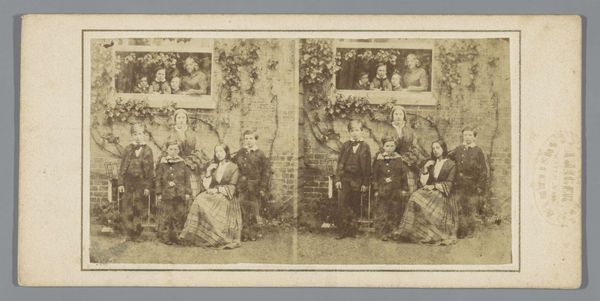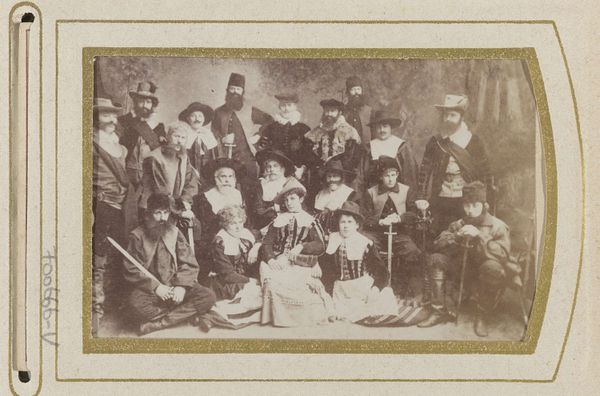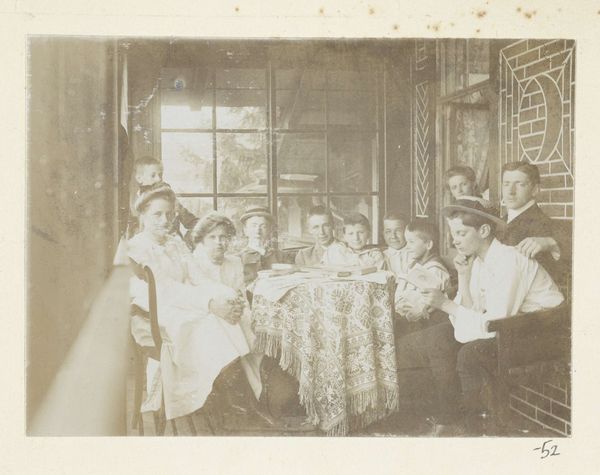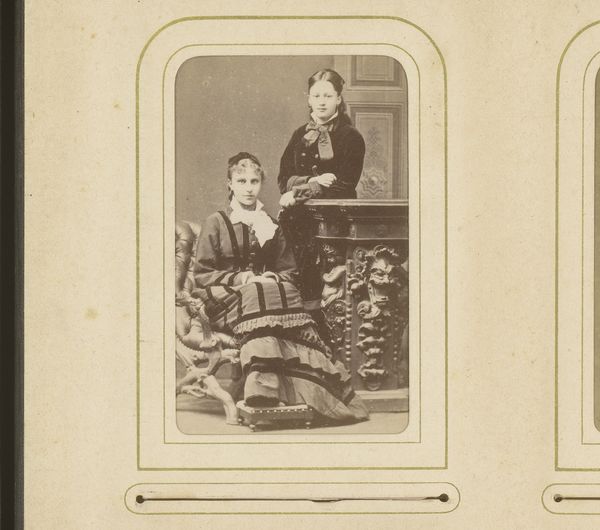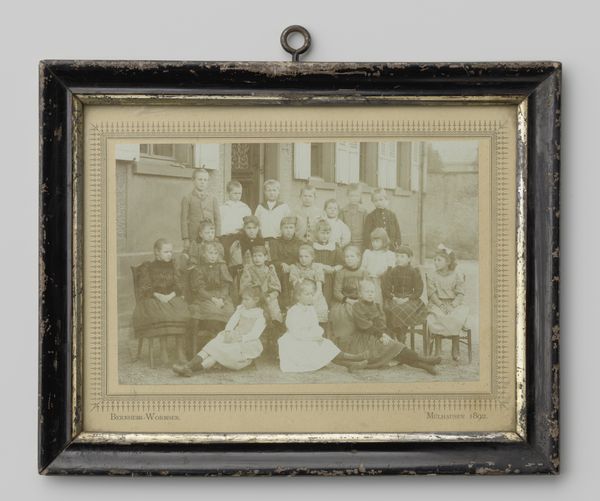
photography, albumen-print
#
portrait
#
photography
#
historical photography
#
group-portraits
#
albumen-print
Dimensions: height 102 mm, width 63 mm
Copyright: Rijks Museum: Open Domain
Editor: Here we have "Groepsportret van tien jonge vrouwen", a photograph from somewhere between 1860 and 1900 by W. Garthwaite. It's an albumen print, a really early photographic process, so the tonal range is amazing. The subjects are, as the name suggests, ten young women. There is something somber about this photo and, at the same time, hopeful. What catches your eye when you look at it? Curator: It’s fascinating to consider this image as more than just a representation of ten young women. Look at how these group portraits gained prominence during this period. They served not only as personal mementos but also as statements about social identity and aspirations, particularly for women. This piece is also an albumen print, how the growing availability and relative affordability of photography democratized portraiture, which had previously been the domain of the wealthy. How might their attire reflect specific social or institutional affiliations, like a school or a religious organization, that also speaks to the function of the portrait? Editor: That's a really interesting point! The uniforms, or at least the very similar outfits, definitely hint at an institution. Curator: Precisely. The standardization in clothing and the formality of the arrangement—two rows, fixed poses—speak volumes about the social codes and the institutional forces shaping their lives. What does that say about their place in society? The group becomes a symbol of something larger, something structured. Do you see how the photograph isn’t merely capturing individual likenesses, but is actively constructing and reinforcing social norms and power dynamics? Editor: Yes, definitely. So, it's not just a picture of some girls; it is about showing how they fit in. It's kind of unsettling to see them like that. It gives a face to those structures of society back then, to all the unsaid rules. Curator: It prompts us to reflect on the power of visual culture to shape perceptions and behaviors and how portraits contribute to societal narratives, which is worth reflecting on, don’t you think? Editor: Absolutely, it's made me look at group photos totally differently! Thanks!
Comments
No comments
Be the first to comment and join the conversation on the ultimate creative platform.
